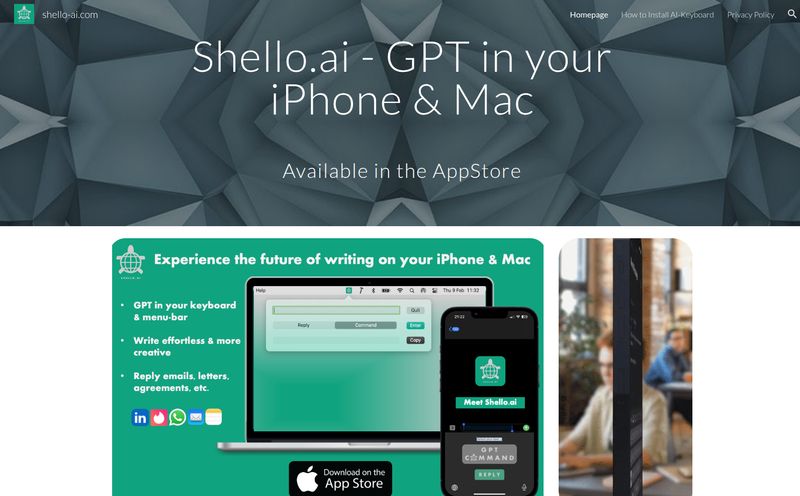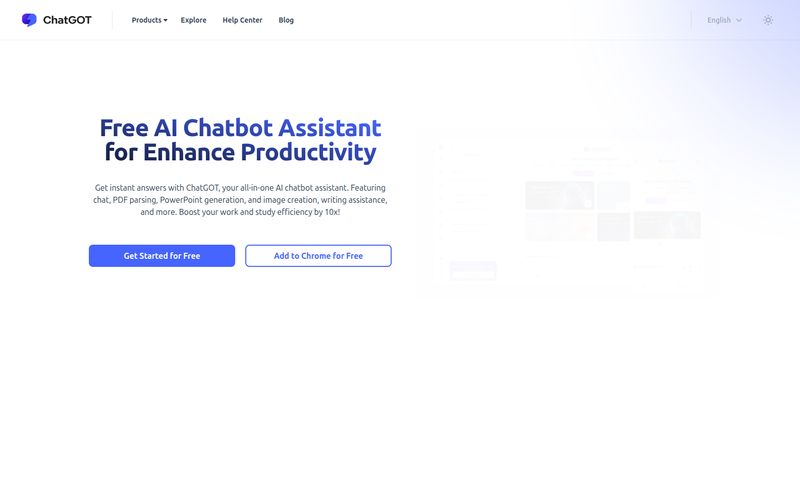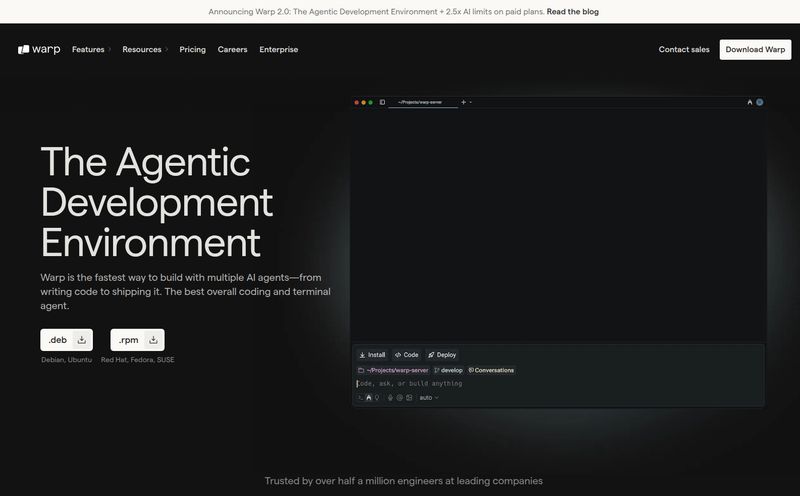If you're in the SEO, content, or any digital marketing space, your browser tabs probably look like mine did a month ago: one for ChatGPT, another for Claude, maybe a third for an AI image generator, and a fourth for... well, you get the picture. The AI explosion has been incredible, but managing all these different tools, logins, and subscriptions is starting to feel like a full-time job. It’s a classic case of tool-sprawl.
I'm always on the hunt for something that simplifies my workflow without costing a fortune. So when I stumbled upon a platform called GPTSidekick, my first thought was, “Oh great, another one?” I was skeptical, I admit. But then I looked closer. The promise wasn't just another GPT wrapper; it was a unified dashboard for the best AI models out there. GPT-4, Claude 3, DALL-E 3, all under one roof, and with a price tag that didn't make my wallet weep.
Okay, you have my attention. Could this be the one? The tool to rule them all? Let’s get into it.
So, What's the Big Deal with GPTSidekick?
Think of GPTSidekick not as a single AI, but as your personal command center for multiple AIs. Instead of pledging allegiance to just one AI overlord (and its subscription fee), GPTSidekick gives you access to a whole roster of them. It's built on a credit system, which they call tokens, and you can use these credits to interact with a variety of models from OpenAI, Anthropic, Google, and others.
It's like having a universal remote for the best Large Language Models (LLMs) and image generators on the market. One login, one bill, one place to do pretty much all your AI-powered tasks. For a workflow nerd like me, that’s just... chef's kiss. It cleans up the chaos. And honestly, it's about time someone did this.
The AI Buffet: A Look at the Models on Offer
This is where GPTSidekick really starts to shine. It's not just about convenience; it's about having the right tool for the right job. Any seasoned pro knows that GPT-4 is a beast for complex reasoning, but sometimes Claude 3 Opus just sings when it comes to creative writing and more natural-sounding prose. GPTSidekick gets this.
Here’s a quick rundown of the heavy hitters you get access to:
- For Text & Reasoning: You've got the titans like GPT-4 and GPT-3.5 from OpenAI, the full Claude 3 family (Haiku, Sonnet, and Opus), Google's Gemini Pro, and even open-source powerhouses like Meta's Llama 3.
- For Image Generation: You can create visuals with OpenAI's DALL-E 3, the endlessly customizable Stable Diffusion, and the newer, powerful Flux model.
Having them all in one spot lets you A/B test prompts across different models instantly. It’s like having a focus group of geniuses at your fingertips. For a recent project, I needed a catchy tagline. I fed the same prompt to GPT-4, Claude 3 Sonnet, and Llama 3 and got three wildly different, but all very usable, options. No more copy-pasting between windows. That alone is a huge time-saver.
More Than Just a Chatbot: Exploring the Features
GPTSidekick isn't just a simple input/output box. They've built a suite of features around the core models that make it genuinely useful for day-to-day work.

Visit GPTSidekick
Analyze Anything: PDFs, Images, and More
This is a big one. You can upload PDFs, documents, or even just paste a link to a website, and chat with it using GPT-4 Vision. I tested this with a dense, 20-page SEO audit PDF for a client. I asked it to “summarize the top 5 most critical technical SEO issues” and it pulled them out perfectly, saving me a good 30 minutes of reading. You can even upload a picture of a whiteboard full of notes and ask it to digitize and organize them. Its a pretty powerful application.
Your Personal Art Director
The image generation is seamlessly integrated. You can just describe what you want, pick your model (DALL-E 3 for ease of use, Stable Diffusion for more granular control), and get to creating. It's perfect for churning out blog post headers, social media graphics, or just visualizing a concept. The prompt library here is also a nice touch, giving you starting points if you're not a seasoned prompt engineer.
The Little Things That Count
Beyond the headline acts, there are some quality-of-life features that I've come to appreciate. The Text-to-Speech (TTS) is surprisingly high quality, great for proof-listening to an article you've just written. And the trackable token usage is fantastic. You can see exactly how many credits each query costs, which helps you manage your monthly budget and understand which models are more expensive. Total transparency. I like that.
Let's Talk Numbers: The GPTSidekick Pricing
Okay, this is the part everyone cares about. Is it actually affordable? In my opinion, yes. It's one of its strongest selling points. They've got a tiered system that seems designed to scale with you.
Here's a simplified breakdown as of when I'm writing this (and I've noticed their pricing can be dynamic, so always check their official page for the latest deals!):
| Plan | Price | Key Features |
|---|---|---|
| Free | $0 / month | 10,000 credits/month, 10 MB disk space |
| Starter | $5 / month | 100,000 credits/month, ~300 GPT-4 questions, 75 MB space |
| Professional | $10 / month | 250,000 credits/month, ~600 GPT-4 questions, 150 MB space |
| Premium | $15 / month | 400,000 credits/month, ~1000 GPT-4 questions, 250 MB space |
The free plan is genuinely useful for testing the waters. But the value proposition of the paid plans is insane. For comparison, a ChatGPT Plus subscription is $20 a month for just one ecosystem. Here, for $10 or $15, you get access to that AND Claude 3, Gemini, Llama, and more. For freelancers, small agencies, or even just curious power users, the math is pretty compelling.
My Honest Take: The Good and The Not-So-Bad
What I'm Loving
The biggest win for me is the cost-to-power ratio. It's just off the charts. You're getting access to tier-1 models for a fraction of what you'd pay to subscribe to them individually. The multi-model approach is the future, and GPTSidekick is already there. It encourages experimentation and lets you find the absolute best AI for your specific task, which leads to better results. And the interface is clean and straightforward. No fluff.
Potential Downsides
Let's be real, no tool is perfect. The main limitation is that you're working within a credit system. If you're an extremely heavy user, you might hit your monthly cap on the lower-tier plans. But the token tracking helps you stay on top of that. This isn't really a con so much as a reality of the pay-as-you-go model. Some might also prefer the native interface of, say, ChatGPT, but I personally think the benefits of the unified dashboard far outweigh any minor UI differences.
Final Verdict: Is GPTSidekick Your Next AI Teammate?
After a few weeks of putting it through its paces, I've officially cleaned up my browser tabs. GPTSidekick has earned a permanent spot in my bookmarks bar. It's not just another tool; it’s a smart consolidation of the current AI landscape.
It’s for the pragmatic user. The freelancer who needs to produce great content and stunning visuals without four different subscriptions. The marketing manager who needs to analyze reports and draft copy efficiently. The student who wants to tap into the most powerful study aids ever created. If you want to use the best AI has to offer without the logistical and financial headache, I genuinely think you should give GPTSidekick a look. Start with the free plan. You've got nothing to lose and a whole lot of efficiency to gain.
Frequently Asked Questions about GPTSidekick
1. Is GPTSidekick actually free to use?
Yes, there is a free plan that gives you a monthly allowance of 10,000 credits. This is a great way to try out the platform and its various models without any commitment. No credit card is required to sign up for the free tier.
2. What AI models can I access through GPTSidekick?
You get access to a wide array of top-tier models, including OpenAI's GPT-4 and DALL-E 3, Anthropic's Claude 3 family (Haiku, Sonnet, Opus), Google's Gemini, Meta's Llama 3, and image models like Stable Diffusion and Flux.
3. How does the credit system work?
Every action, like asking a question or generating an image, consumes a certain number of credits or “tokens.” More complex models like GPT-4 or Claude 3 Opus cost more credits per query than simpler ones like GPT-3.5. The platform shows you the cost of each query, so you can manage your usage effectively.
4. Is GPTSidekick a good replacement for a ChatGPT Plus subscription?
For many users, yes. For a lower price than ChatGPT Plus, the Professional or Premium plans on GPTSidekick give you access to GPT-4 plus Claude 3, Gemini, and more. If you value having a variety of AI tools at your disposal, it offers significantly more flexibility and value.
5. Can I analyze my own documents with it?
Absolutely. You can upload PDFs, DOCX files, and images and use the GPT-4 Vision model to chat with them. You can ask it to summarize content, extract data, or answer questions based on the document's contents.
6. Who is the ideal user for GPTSidekick?
It's ideal for freelancers, content creators, marketers, students, and small business owners who want access to powerful, diverse AI tools without the complexity and cost of managing multiple separate subscriptions. It's for anyone who wants to streamline their AI workflow.
Reference and Sources
- GPTSidekick Official Website: https://gptsidekick.ai/
- GPTSidekick Pricing Page: https://gptsidekick.ai/pricing
- Anthropic's Claude 3 Announcement: https://www.anthropic.com/news/claude-3-family



